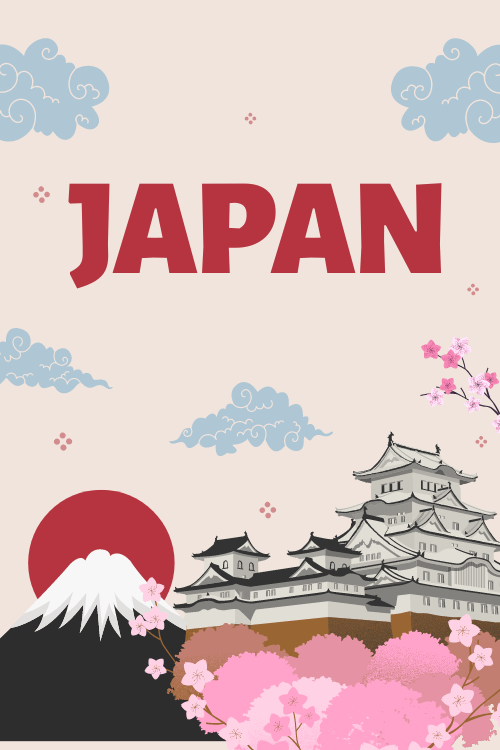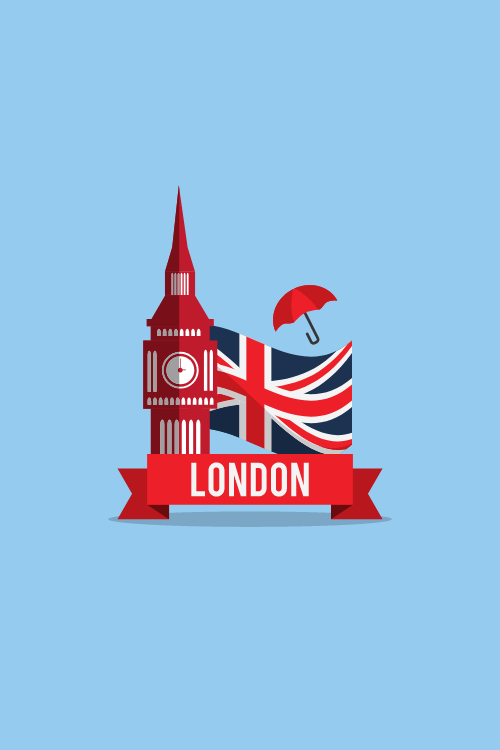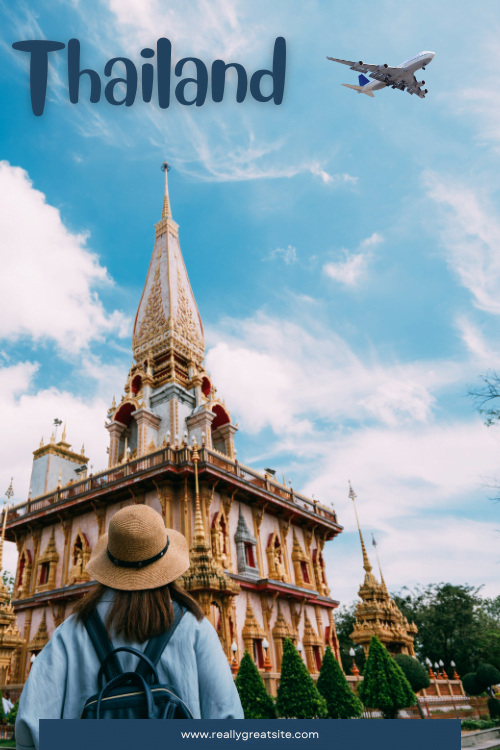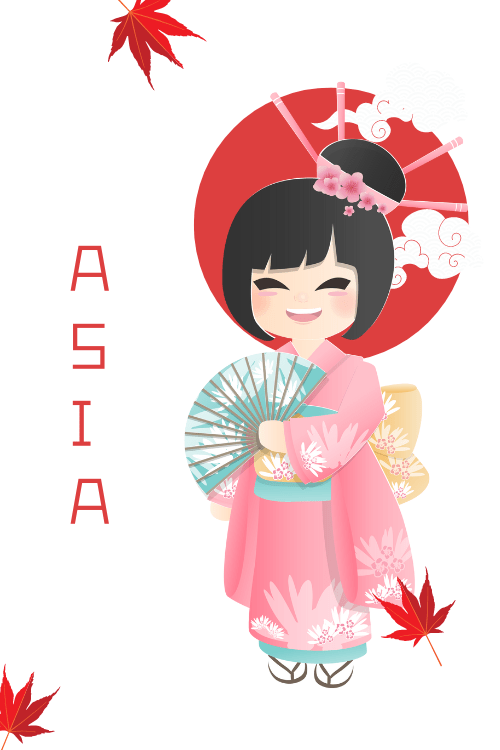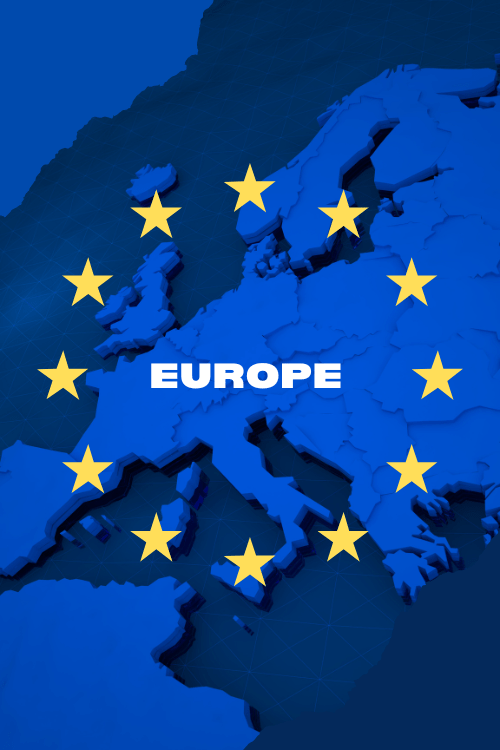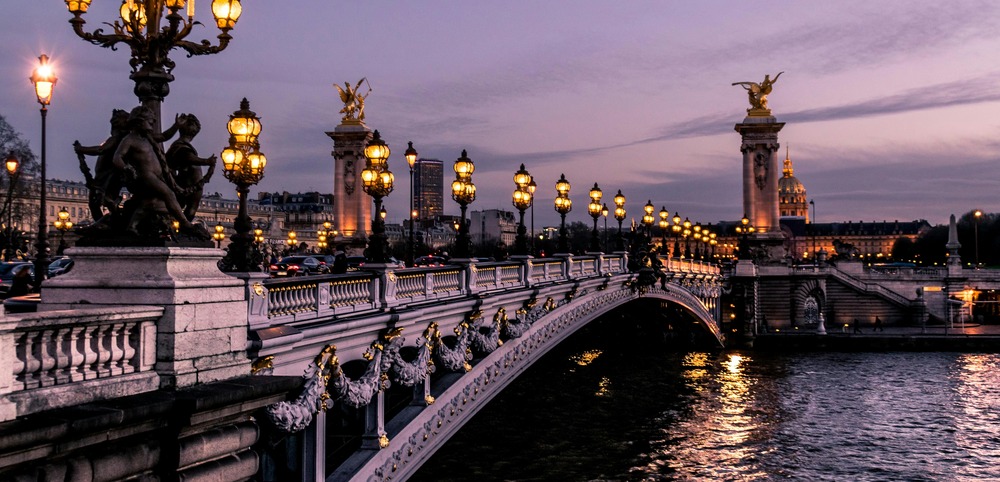Travel
Best Time To Visit Paris? The Only Guide You’ll Need
You’re standing at Pont des Arts at 6:47 AM on a crisp October morning, and it hits you: this isn’t the Paris you expected.
The Instagram-famous bridge is completely empty. No tourists. No selfie sticks. Just you, the sound of the Seine lapping against its banks, and a lone street sweeper who nods “bonjour” as he passes.
Your breath forms small clouds in the autumn air, and the first rays of sunlight are just beginning to glint off the windows of the Louvre.
This is when you realize that everything you’ve read about the “best time” to visit Paris has been fundamentally wrong.
When is the best month of the year to visit the city of light?
Let’s first take a look at the seasons.
Best Time To Visit Paris? Understanding Paris Seasons Like a Local
When Should You Visit Paris?
Answer these questions to discover your ideal time to visit the City of Light!
What’s your main priority when visiting Paris?
How do you feel about crowds?
What’s your ideal temperature range?
What kind of activities interest you most?
How important is budget to your trip?
Your perfect Paris moment won’t look like anyone else’s. The city transforms dramatically throughout the year, and while summer brings those postcard-perfect picnics in Luxembourg Gardens, you’ll share that picture with literally thousands of others.
What you won’t read in typical guides is that Paris operates on a complex social calendar that even most Parisians don’t fully grasp.
Winter: The Secret Season (December-February)
When you step into Le Select in January, ordering your café crème for €2.90 instead of the usual €4.50, you’ll notice something different: the chairs are filled with actual Parisians. Winter transforms Paris from a tourist spectacle into a living, breathing city.
December brings the magic of Christmas markets to the Champs-Élysées, where the scent of vin chaud mingles with roasting chestnuts and aged cheese. After December 15th, hotel prices plummet by 40%, and you’ll find yourself walking straight into the Louvre without the notorious summer queues.
January reveals a different side of Paris altogether. While most tourists avoid this month, it’s when you’ll discover the true rhythm of Parisian life.
Les Soldes, the legally regulated winter sale season, transforms even the most exclusive shopping districts. You might find yourself browsing Chanel at Galeries Lafayette alongside Parisian fashionistas, all hunting for treasures at half price. Restaurant reservations that seemed impossible in summer suddenly become attainable – yes, even at the coveted Septime.
February brings the first whispers of spring and the pre-Fashion Week energy that pulses through the Marais.
Valentine’s Day in Paris isn’t the cliché you might expect; instead of overpriced set menus, you’ll find locals enjoying intimate dinners in neighborhood bistros, where the prix fixe hasn’t changed for the occasion.
| Month | Average Temp (°C) | Crowds | Hotel Prices | Wait Times (Major Sites) |
|---|---|---|---|---|
| Dec | 4-8° | Medium | High/Low* | 10-20 min |
| Jan | 3-7° | Low | Lowest | 5-10 min |
| Feb | 3-8° | Low | Low | 5-15 min |
Key Winter Benefits:
- Authentic local experiences
- Lowest hotel rates of the year
- Minimal queues at major attractions
- Best shopping deals during Les Soldes
Spring: The Renaissance (March-May)
March arrives like a whispered promise, bringing with it a Paris that’s shaking off its winter slumber. After Fashion Week you’ll see fewer crowds around March 15th, you’ll witness the city’s gradual transformation. Café terraces begin to emerge like crocuses through snow, first with overhead heaters, then without.
Local tip: this is when you’ll find the best balance of decent weather and pre-season prices at boutique hotels in Le Marais and Saint-Germain-des-Prés.
April in Paris isn’t just a song – it’s a masterclass in timing. The cherry blossoms at Notre-Dame and Jardin des Plantes create a pink canopy that lasts barely ten days, usually between April 5-15th (though climate change has made this less predictable).
You’ll want to track this carefully; serious photographers often book flexible dates and monitor local bloom reports. Morning light between 7-9 AM offers the best photography conditions, before the Instagram crowds descend.
May might be the city’s best-kept secret. While tourists flock to Paris in June and July, savvy travelers know May offers similar weather with significantly smaller crowds.
The city comes alive with festivals: Nuit des Musées (Museum Night) opens cultural institutions until dawn, and the French Open brings electric energy to the streets around Roland Garros. Local neighborhoods host vide-greniers (street fairs), where you can hunt for vintage treasures alongside Parisians.
Spring Quick Facts:
| Month | Average Temp (°C) | Crowds | Hotel Prices | Special Events |
|---|---|---|---|---|
| March | 6-12° | Low/Med | Moderate | Fashion Week |
| April | 8-16° | Medium | High | Art Paris |
| May | 11-19° | High | High | French Open |
Summer: Peak Season Secrets (June-August)
Let’s address the elephant in the room: summer in Paris is crowded. But here’s what most guides won’t tell you – it’s also when the city is most alive, and with the right strategy, you can experience it without the tourist traps.
June brings the longest days, with sunset stretching past 10 PM. This extra daylight transforms Paris into a different city.
While tourists cluster around the Eiffel Tower, you’ll find Parisians at the Canal Saint-Martin, sharing wine and cheese until twilight. The secret? Visit major attractions during dinner time (8-10 PM) when most tourists are at restaurants, and eat later like a local.
July ushers in the Paris Plages, when the Seine’s banks transform into urban beaches. While tourists photograph these scenes from bridges, locals know the best spots are in the 19th arrondissement along the Canal de l’Ourcq, where free outdoor movies screen on warm evenings. Bastille Day (July 14th) isn’t just about fireworks at the Eiffel Tower – each arrondissement hosts local celebrations, often more authentic than the main event.
August is when Paris traditionally “empties” of Parisians, but this tradition is changing. While some smaller shops still close, many restaurants now stay open, competing for the tourist trade. The city compensates with Paris Plages activities, open-air cinema at La Villette, and cultural events designed to entertain both visitors and locals who couldn’t afford their Côte d’Azur holiday.
Summer Quick Facts:
| Month | Average Temp (°C) | Crowds | Hotel Prices | Wait Times (Popular Sites) |
|---|---|---|---|---|
| June | 14-23° | High | Peak | 45-90 minutes |
| July | 16-25° | Highest | Peak | 60-120 minutes |
| August | 16-25° | High | High/Med | 45-90 minutes |
Fall: The Connoisseur’s Season (September-November)
September marks what Parisians call la rentrée – the return to real life after summer holidays. You’ll feel this energy pulse through the city as fashion boutiques unveil winter collections and art galleries launch their most important exhibitions. This is when you’ll experience the Paris of your imagination: crisp morning air, perfectly curated window displays, and the subtle scent of fresh baguettes mixing with fallen leaves.
During Paris Fashion Week (late September), even small cafés in Le Marais transform into impromptu networking spaces. While most tourists snap photos of models rushing between shows, you’ll find the real action at less obvious spots like Café Charlot or Boot Café, where industry insiders gather. Pro tip: hotel prices spike during Fashion Week, but drop dramatically the week after, while the city retains its glamorous atmosphere.
October might be Paris’s perfect month. The average temperature of 15°C (59°F) means you can still enjoy outdoor cafés, but tourist crowds thin significantly. This is when you’ll find yourself having unexpected moments of solitude in usually packed spots. The Luxembourg Gardens, still warm enough for afternoon reading, becomes a theater of falling leaves and perfect light. Museums like the Musée d’Orsay are pleasantly uncrowded, letting you spend quality time with Van Gogh without playing tourist tetris.
November brings a moody, introspective Paris that photography enthusiasts dream about. Morning fog along the Seine creates ethereal scenes, especially around Île Saint-Louis between 7-9 AM. While rain is common, it transforms the city’s limestone buildings and zinc roofs into a monochromatic canvas that’s quintessentially Parisian. This is when locals reclaim their favorite restaurants, and you’ll find yourself easily scoring reservations at typically booked-solid spots like Clamato or Le Baratin.
Fall Quick Facts:
| Month | Average Temp (°C) | Crowds | Hotel Prices | Cultural Events |
|---|---|---|---|---|
| Sept | 13-21° | High | Peak* | Fashion Week, Art Fairs |
| Oct | 9-16° | Medium | Moderate | FIAC Art Fair |
| Nov | 6-11° | Low | Low | Photo Saint-Germain |
| *Except last week of September |
Strategic Planning: Making Any Season Work
Your perfect Paris visit depends less on the season and more on your daily rhythm. Here’s how to optimize any time of year:
Morning Strategy (7-11 AM):
Most tourists don’t start their day until 10 AM. By beginning your day three hours earlier, you’ll experience a different city entirely. In summer, this means comfortable temperatures and empty streets for photos. In winter, you’ll catch the morning light that makes Paris’s architecture glow.
Attraction Timing:
Best Times to Visit Popular Sites:
– Louvre: Wednesday/Friday evenings (open late)
– Eiffel Tower: First slot (9 AM) or during dinner (8 PM)
– Notre-Dame area: Sunrise to 9 AM
– Sacré-Cœur: One hour before sunset
– Musée d’Orsay: Thursday late afternoon
The Real Best Time to Visit
The truth is, there’s no universal “best time” to visit Paris. Instead, match the season to your priorities:
For Photography: Early October
For Budget: January-February
For Cultural Events: September-October
For Classic Paris: May
For Local Experience: November
For Festive Atmosphere: December
For Fashion: March or September
For Outdoor Living: June
Weekly & Daily Timing Strategies: Your Hour-by-Hour Paris Guide
Monday: The Quiet Day
Many museums and smaller shops close on Mondays, but this creates unique opportunities. Here’s how to turn Paris’s “closed” day into your advantage:
Morning (6-10 AM)
The city slowly awakens, particularly in residential areas like the 11th and 12th arrondissements. This is your chance to experience local Paris:
- 6:30 AM: Join locals at traditional boulangeries before work rush
- 7:00-8:30 AM: Perfect time for photography along Seine (minimal boat traffic)
- 8:30-10:00 AM: Explore outdoor markets opening for the week
Mid-day (10 AM-2 PM)
While tourists cluster around closed museums, head to:
- Luxembourg Gardens (less crowded than weekends)
- Canal Saint-Martin neighborhood
- Père Lachaise Cemetery (best light for photos)
Evening (2 PM-Close)
Focus on open attractions that are typically overcrowded:
- Centre Pompidou (one of few museums open Mondays)
- Galleries in the Marais (many stay open late)
- Eiffel Tower (significantly shorter queues)
Tuesday-Thursday: Prime Visiting Days
Tuesday Morning Strategy:
Museums are freshly cleaned and least crowded:
Optimal Museum Schedule:
7:30 AM: Breakfast at local café
8:30 AM: Arrive at first museum 30 minutes before opening
12:30 PM: Break for lunch when crowds peak
2:00 PM: Second museum during post-lunch lull
5:00 PM: Evening attraction or neighborhood walk
Wednesday Special Opportunities:
Many museums open late:
- Louvre until 9:45 PM (enter after 6 PM for minimal crowds)
- Orsay until 9:45 PM
- Pompidou until 9 PM
Thursday Local Experiences:
Weekly markets peak:
- Bastille Market (morning)
- Belleville Market (afternoon)
- Evening gallery walks in Marais
Weekend Strategy: Avoiding the Crowds
Saturday Navigation:
Morning (7-11 AM):
- Photograph empty streets before shops open
- Visit residential neighborhoods while locals shop
- Explore covered passages before crowds arrive
Afternoon (11 AM-4 PM):
Instead of tourist centers, focus on:
- Canal de l’Ourcq
- Parc des Buttes-Chaumont
- Belleville neighborhood
Evening (4 PM-Close):
- Return to central areas as day-trippers leave
- Join locals for apéro hour (6-8 PM)
- Late-night museum visits
Sunday Alternative Plan:
| Time | Tourist Spots | Local Alternative |
|---|---|---|
| 7-9 AM | Empty Champs-Élysées | Rue Mouffetard Market |
| 9-11 AM | Montmartre crowds begin | Rue des Martyrs shopping |
| 11-2 PM | Peak tourist hours | Sunday lunch in 15th arr. |
| 2-5 PM | Museum queues | Bois de Vincennes |
| 5-Close | Eiffel Tower sunset crowds | Canal Saint-Martin |
Seasonal Daily Adjustments
Summer Timing Shifts:
6-8 AM: Photography and empty streets
8-10 AM: Outdoor attractions
10-4 PM: Indoor activities (heat)
4-7 PM: Parks and gardens
7-11 PM: Outdoor dining and evening walks
8-10 AM: Indoor breakfast and museums
10-3 PM: Outdoor activities (warmest hours)
3-5 PM: Shopping (heated stores)
5-8 PM: Museums and galleries
8-Close: Cozy bistros and bars
Shoulder Season Flexibility:
Spring/Fall allow more balanced schedules:
- Morning: Mix indoor/outdoor activities
- Afternoon: Longer outdoor sessions
- Evening: Weather-dependent plans
Paris Market & Shopping Guide: The Local Experience
In Paris, timing transforms your shopping experience from tourist to local. Each neighborhood follows its own rhythm, and understanding these patterns helps you navigate the city like a resident.
Traditional food markets form the backbone of Parisian daily life. Early morning starts around 7 AM, when restaurant chefs and serious home cooks select the finest produce. By 8:30, the markets pulse with energy as locals gather for their weekly shopping, creating a vibrant atmosphere that defines Parisian culture.
Morning Market Scene (7 AM – 1 PM)
| Market Name | Days | Best Time | Known For |
|---|---|---|---|
| Marché Raspail | Tue/Fri | 8:00 AM | Organic produce |
| Marché Bastille | Thu/Sun | 9:00 AM | Local atmosphere |
| Saxe-Breteuil | Wed/Sat | 8:30 AM | Luxury items |
The morning pricing follows a predictable pattern that savvy shoppers use to their advantage. Early birds find the best selection but pay full price. The real strategy unfolds near closing time, when vendors dramatically reduce prices rather than transport unsold goods.
| Time Window | Price Level | Selection Quality | Crowd Level |
|---|---|---|---|
| 7:00-8:30 AM | Full Price | Excellent | Light |
| 8:30-11:00 AM | Full Price | Very Good | Heavy |
| 11:00-12:30 PM | Slight Discounts | Good | Moderate |
| 12:30-1:00 PM | 30-50% Off | Limited | Light |
Shopping District Dynamics
Le Marais stands unique among Paris neighborhoods, maintaining Sunday hours when most of the city closes. This historical Jewish quarter has evolved into a shopping haven, especially on Sundays when locals and visitors alike crowd its narrow streets.
| District | Peak Hours | Quiet Hours | Special Notes |
|---|---|---|---|
| Le Marais | 2-6 PM Sun | 11 AM-2 PM Weekdays | Sunday shopping |
| St-Germain | 3-7 PM Weekdays | 10 AM-Noon | Fashion focus |
| Champs-Élysées | 3-7 PM Daily | 10-11 AM Weekdays | Tourist crowds |
Department Store Strategy
The grand magasins of Paris require their own approach. These historic buildings house both shopping and cultural experiences, with their Art Nouveau architecture and gourmet food halls.
| Store | Best Entry Time | Quiet Period | Special Features |
|---|---|---|---|
| Galeries Lafayette | 10:00 AM Tue/Wed | 7-8 PM Weekdays | Rooftop view |
| Printemps | 10:00 AM Mon/Thu | 6-8 PM Weekdays | Deli floor |
| BHV Marais | 11:00 AM Weekdays | 5-7 PM | Hardware basement |
Seasonal Sales (Les Soldes)
The French government regulates sale periods, creating intense shopping seasons that locals plan for months in advance.
| Season | Typical Dates | Best Shopping Period | Discount Level |
|---|---|---|---|
| Winter | Jan 10-Feb 20 | Week 2 | 40-50% |
| Summer | Jun 28-Aug 8 | Days 5-10 | 30-70% |
| Pre-Sales | 1 week before | Members only | 20-30% |
Key Shopping Points:
- Early morning offers the best selection
- Mid-afternoon brings the most vibrant atmosphere
- Evening shopping provides a calmer experience
- Sundays transform Le Marais into Paris’s most active quarter
Paris reveals itself differently to those who understand its rhythms. The city operates on a delicate balance of tradition and modernity, where morning markets coexist with digital payment apps, and centuries-old cafés serve alongside trendy fusion restaurants.
Success in Paris comes not from rushing between tourist sites, but from adapting to its flow. Whether you’re navigating morning markets, timing museum visits, or joining locals for evening apéritifs, remember that Paris rewards those who embrace its pace.
The true Paris experience lies in the small moments: morning light on limestone buildings, the perfect croissant from a neighborhood bakery, or finding yourself in a square where tourists rarely venture. By understanding the city’s patterns and timing, you transform from visitor to temporary Parisian.
Need Mobile Data While Traveling in Paris?
Stay connected throughout your Parisian adventure with an eSIM – the modern alternative to traditional SIM cards.
Instant activation means you can start using your eSIM as soon as you arrive in Paris, without the need to wait for physical delivery. You can keep your home number active while using local data, and coverage is available across all Parisian regions. Competitive rates compared to roaming charges make eSIMs an attractive option for travelers.
Multiple data packages are available to suit your needs, and easy top-up options ensure you never run out of data while exploring Paris’ vibrant culture.
Click here to see our France eSIM plans!

